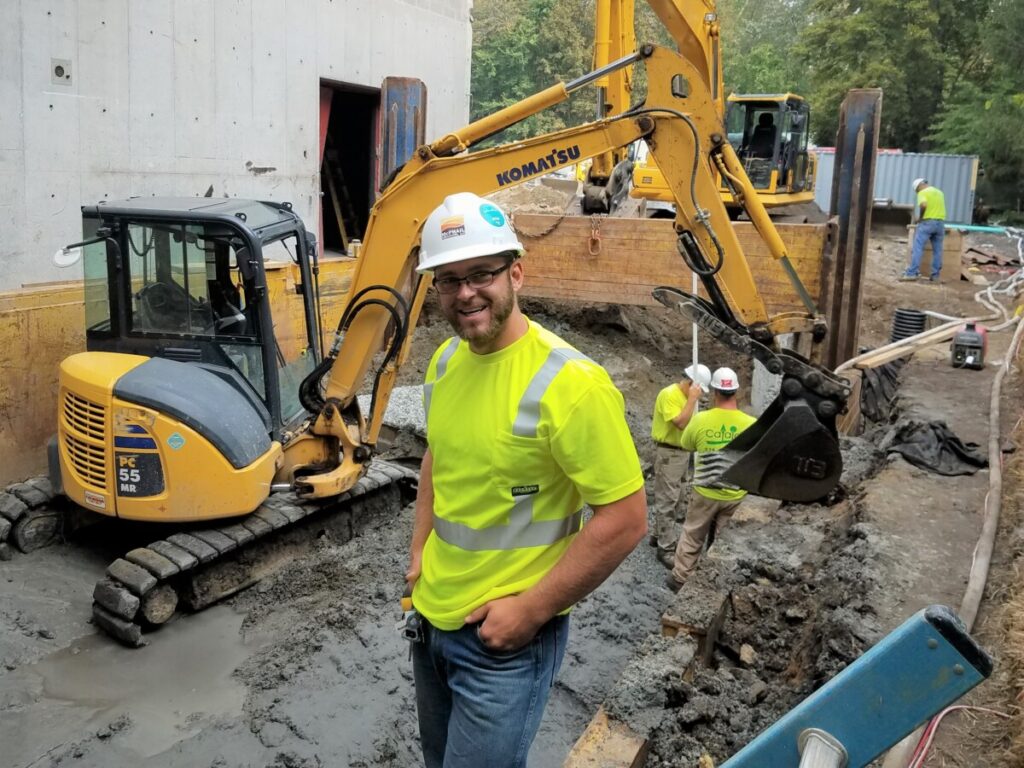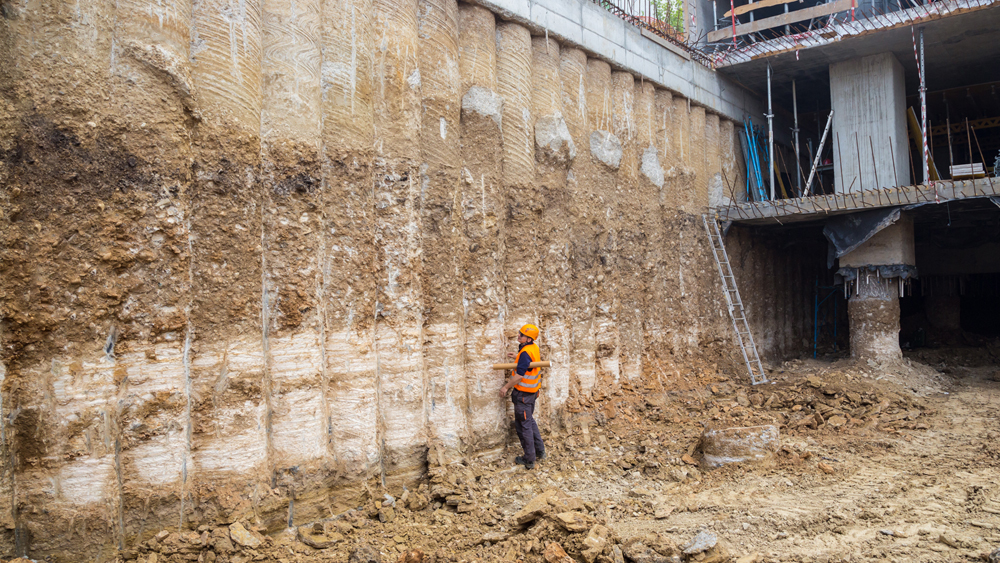Leading Geotechnical Engineers for Cutting-Edge Soil Evaluation and Structure Design
Wiki Article
Understanding the Essential Function of the Geotechnical Industry in Modern Building And Construction Projects and Facilities Growth
The geotechnical industry is a foundation of contemporary building and construction and framework development, providing important understandings right into dirt actions that straight affect task outcomes. Through advanced soil assessments and innovative engineering services, geotechnical experts not only guarantee structural honesty however likewise address sustainability issues in the middle of progressing environmental criteria.Importance of Soil Assessment
Dirt analysis plays a crucial role in the geotechnical industry, functioning as the structure for educated decision-making in building and construction tasks. Precise soil assessment is vital for identifying the suitability of a site for numerous sorts of frameworks, consisting of household homes, business buildings, and bridges. By evaluating dirt make-up, toughness, wetness, and density web content, designers can prepare for prospective challenges and minimize dangers related to ground instability, disintegration, and settlement.The assessment procedure generally entails a series of examinations and observations that provide essential info concerning the subsurface conditions. This information notifies the layout and building and construction processes, ensuring that frameworks are built on strong ground with sufficient assistance. Understanding the soil account enables engineers to select ideal construction techniques and products, optimizing resource use and decreasing costs.
In addition to making certain structural integrity, soil evaluation adds to environmental sustainability. By identifying prospective contamination or damaging effects on surrounding ecological communities, designers can implement methods to secure these all-natural sources. Overall, detailed dirt assessment is essential in the geotechnical field, underpinning the security, performance, and ecological duty of building jobs.
Secret Geotechnical Strategies
A selection of vital geotechnical techniques are employed to assess and enhance the stability and performance of construction sites. One fundamental approach is dirt tasting and screening, which enables engineers to identify the chemical and physical residential or commercial properties of the ground. This info is important for making educated choices relating to foundation design and construction approaches.An additional necessary method is site characterization, which involves the detailed analysis of soil and rock problems with methods such as borehole boring and in-situ screening. Methods like Requirement Infiltration Examinations (SPT) and Cone Penetration Examinations (CPT) offer important information on soil strength and stratigraphy.
Ground improvement methods, such as soil stabilization and grouting, are also crucial in enhancing the load-bearing capacity of weak dirts. These methods can mitigate negotiation and improve total site conditions.
In addition, slope security analysis is important for identifying possible landslide risks and ensuring the security of excavations. This analysis usually utilizes mathematical modeling and limitation equilibrium approaches to predict dirt behavior under different conditions.
Integrating these geotechnical techniques into building planning not just maximizes job end results but additionally ensures the long-lasting sustainability of infrastructure advancement.
Effect On Construction Safety

Furthermore, reliable geotechnical design includes implementing mitigation approaches for identified dangers. This might include soil stablizing strategies, keeping frameworks, or water drainage systems to relieve hydrostatic pressure. By attending to these variables, construction teams can minimize the chance of accidents and improve employee safety and security.
Additionally, continuous tracking of site problems is essential during construction. Geotechnical instruments can offer real-time information pertaining to ground movement and stability, allowing for timely interventions when needed.
Fundamentally, the geotechnical market plays an essential duty in guarding construction projects. By prioritizing ground integrity and employing rigorous assessment methods, the geotechnical sector not only protects the labor force yet additionally adds to the long life and integrity of created framework.
Sustainability in Geotechnical Practices

In addition, geotechnical designers are currently utilizing sophisticated innovations, such as geosynthetics, which improve soil stability while decreasing the quantity of product needed. This not only conserves resources yet likewise leads to less waste generation (engineer of record). The assimilation of lasting style engineer of record concepts right into geotechnical design encourages making use of eco-friendly power sources in construction procedures, better minimizing carbon discharges
By performing these assessments, geotechnical experts can develop strategies that mitigate damaging effects, ensuring conformity with ecological regulations. On the whole, the emphasis on sustainability within geotechnical methods not just adds to the longevity and durability of framework but also advertises a liable method to land and resource monitoring.
Future Trends in Geotechnical Design
Development is driving the future of geotechnical engineering, as arising modern technologies and methodologies improve the sector. The integration of advanced data analytics and expert system is readied to reinvent website examination and threat assessment, enabling engineers to make more informed decisions based on real-time data. The use of geosynthetic materials is gaining grip, supplying lasting remedies that improve soil security and reduce ecological influence - consulting engineer.Another significant fad is the adoption of automated and robot systems for surveillance and building processes. These modern technologies not only enhance accuracy yet likewise enhance security by reducing human participation in harmful environments. In addition, the application of Structure Info Modeling (BIM) in geotechnical design assists in improved cooperation among stakeholders, maximizing project distribution and decreasing prices.
As climate adjustment positions brand-new challenges, the market is increasingly concentrating on resilience and versatility in layout methods, making certain infrastructure can hold up against extreme weather occasions. Ultimately, the ongoing fad towards sustainability will drive advancement in environmentally friendly products and methods, lining up geotechnical design with more comprehensive environmental objectives. Jointly, these fads will certainly form a more effective, lasting, and resistant geotechnical landscape for future tasks.
Conclusion

The geotechnical market is a cornerstone of modern building and construction and facilities advancement, providing essential understandings into dirt habits that directly affect job outcomes. consulting engineer.Soil assessment plays an essential function in the geotechnical industry, offering as the foundation for informed decision-making in building and construction projects. On the whole, detailed soil analysis is vital in the geotechnical field, underpinning the safety and security, effectiveness, and environmental duty of building tasks
Building safety is substantially influenced by geotechnical methods, as the stability and stability of the ground straight impact the total security of a building and construction site.In verdict, the geotechnical industry is vital in modern building and construction and infrastructure advancement, giving critical evaluations that ensure structural honesty and safety.
Report this wiki page